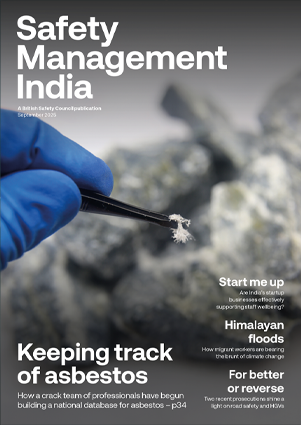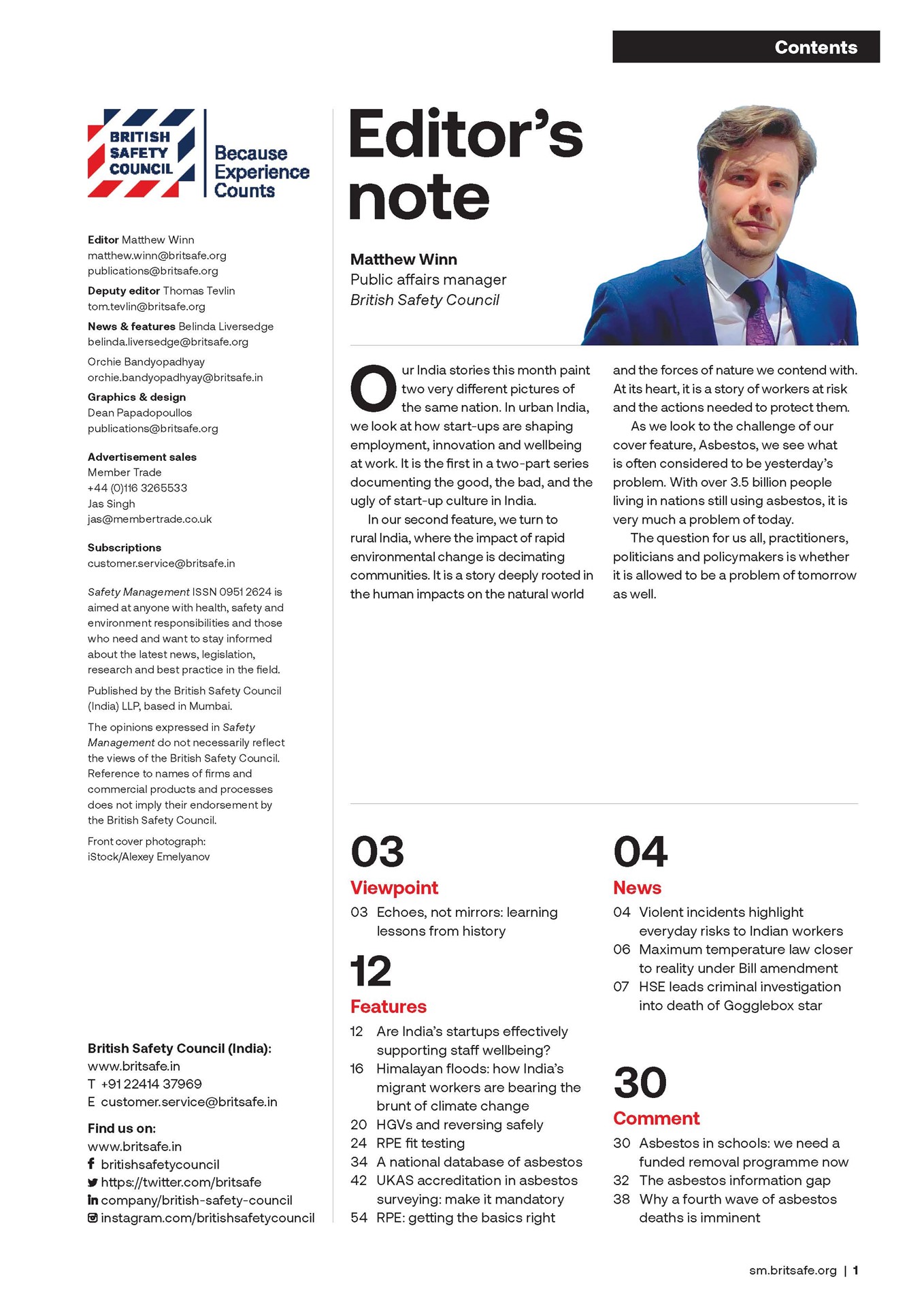Employers now have a specific legal duty to take reasonable steps to protect employees from sexual harassment at work, making it essential for businesses to proactively anticipate when sexual harassment may occur and implement practical and appropriate measures to prevent it.
Features
Now is the right time to address workplace sexual harassment
Since the 1970’s, trade unions and women’s rights groups have been at the forefront of demanding action against sexual harassment, campaigning for workplaces to confront and eradicate the problem. And yet today over half of all women in the UK workplace have experienced sexual harassment.
Although some progress has been made in the intervening years, we have to jump forward several decades to 2010, when the Equality Act clearly defined sexual harassment in the workplace as unlawful, to see real changes in UK legislation.
The second half of the 2010s brought a cultural shift with movements such as #MeToo and ‘This is Not Working’ gaining traction after several high-profile cases. However, more recent allegations against organisations such as Foxtons, McDonalds, Harrods and the Ministry of Defence have demonstrated the need for further action.
 Employers need to have accessible reporting processes that encourage people to be open about their experiences without fear of judgement. Photograph: iStock
Employers need to have accessible reporting processes that encourage people to be open about their experiences without fear of judgement. Photograph: iStock
Legal reforms and employer duties
In 2024 The Worker Protection Act came into force as an amendment to the Equality Act. It places a legal duty for employers to be proactive in their management of workplace sexual harassment. The changes mean that to ensure that employers aren’t subjected to enforcement action or increased liability, they need to take preventative measures and ‘reasonable steps’ including completing risk assessments, providing clear policies, training and access to an inclusive reporting process.
John Kirkpatrick, chief executive of the Equality and Human Rights Commission (EHRC), commented on the day the legislation was enacted: “We welcome these vital protections coming into force. We will be monitoring compliance with the new duty and will not hesitate to take enforcement action where necessary.”
How strong this enforcement action will be, remains to be tested. But employers’ responsibilities to their workers, and the business case for getting this right, go well beyond any legal benchmark that may be set.
Reactive management of sexual harassment in 2025 is clearly not good enough. Everyone deserves the right to work in an environment that is both physically and psychologically safe. We should expect that employers will take proactive steps to protect all colleagues regardless of gender, from offensive, hostile or degrading behaviour, sexual or otherwise.
Employee expectations and reputational risks
With social media providing a platform for highlighting concerns, employers need to be aware that organisations who do not promote inclusive cultures of dignity and respect for all, will be held to account by the ‘court of public opinion’.
The current generation of younger workers put greater importance on trust, psychological safety and ethical employers when seeking work and engaging with their organisation and may not tolerate what may be considered ‘less principled employers’.
A widely publicised scandal naming a company or even individuals within it, could quickly damage reputations and impact on staff recruitment, engagement, retention, as well as customer loyalty and turnover.
Sexual harassment should not be seen solely as an HR issue, it is a business risk that requires the attention of the core leadership team. OSH professionals can play an important role in supporting any actions taken to assess and control the risks.
 The current generation of younger workers put greater importance on trust and psychological safety. Photograph: iStock
The current generation of younger workers put greater importance on trust and psychological safety. Photograph: iStock
Taking proactive steps
The EHRC has produced a guide for employers where it explores eight reasonable steps that can be taken to manage the risks and ensure organisations meet their legal duty. These are:
- Develop an effective anti-harassment policy
Many organisations report that they have in place policies on how they manage sexual harassment, but there is a real danger that if these only define what ‘it’ is and then talk about what will happen when it occurs, then they fail to address the real issues. The policy should promote respect, clearly state unacceptable behaviour, set out how the organisation will prevent sexual harassment and the consequences for breaching the policy. It should be (like all policies) accessible, communicated and evaluated for effectiveness. - Engage your staff
It is vital to engage all workers at every level in the conversation. Use one-to-ones, staff surveys and exit interviews. What is their experience? How do they feel? What do they expect? Are your policies working? - Assess and take steps to reduce the risks.
If you agree with the stance that safeguarding health and safety includes mental health and wellbeing, then occupational safety and health professionals undoubtedly have a role to play here. Assessments may need to include the vulnerability brought about from lone working, power imbalance, lack of diversity, the impact of alcohol, socialising and interactions with the public, customers, and third party professionals. - Encourage reporting
With many people working remotely, and the connected world of work, the potential for sexual harassment is not just face-to-face, but via WhatsApp groups, Slack channels and other social platforms where boundaries may be blurred, and reporting harassment in these circumstances may feel more daunting. Employers need to have accessible reporting processes that encourage people to be open about their experiences without fear of judgement or retaliation. The addition of anonymous reporting in some instances may help to build a truer picture of what is happening. - Provide effective training
A considered suite of training can help embed the ethos within your culture. Start with awareness campaigns for all, covering your approach, expectations and the support available. Then consider providing specific training for managers and colleagues on how to spot a problem, what to do ‘in the moment’, and how to support individuals and manage incidents. The addition of ‘champions’ who can help promote and embed the organisation’s approach and training as well as being the person that colleagues can go to with concerns is recommended. Don’t forget that this group will need specific additional training. - Deal with complaints
Have clear processes to deal with incidents both informally and formally. Now is the time to make plans, not when an incident occurs. Ensure that you provide confidentiality and protect the complainant and any witnesses from further harassment or victimisation. - Take steps in relation to third parties
Depending on the situation this may include providing guidelines to contractors, patients or customers and a separate reporting procedure. Harassment from third parties should be taken as seriously as that from another worker or manager. - Monitor and evaluate
Like any other risk management process, you need to ensure that the steps taken are working and measured against best practice, making changes to improve when necessary.
Everyone
It is true to say that more women than men report sexual harassment in the workplace, however it is not purely a female concern, and statistics show that there are specific groups of workers who may be at higher risk due to their protected characteristics (or perceived characteristics). It should be remembered that sexual harassment is often not about sex but about exerting power and anyone can be affected regardless of their gender or their sexuality.
In 2025 we should not expect any worker to accept the kind of behaviour that makes them feel belittled, intimidated or fearful. We need to continue to educate all genders in terms of acceptable behaviour and respect in the workplace and beyond.
Proactive management of sexual harassment should not be about compliance, it should be about moral leadership and credibility, with dignity, respect and safety being non-negotiable. The call to action is for employers to reflect on their own organisation and ask themselves “Can we do better?”.
Key definitions
- Sexual harassment – unwanted conduct or behaviour of a sexual nature that violates a person’s dignity or creates an intimidating, hostile, degrading, humiliating, or offensive environment.
- Workplace – not just the office. Organisations need to consider people working in the community, interacting with customers, contractors and other third parties, wherever that may be.
Consider the impact on the affected individual
The intention behind the conduct or behaviour does not define whether something is sexual harassment or not. It is the way it makes the target feel that is important. This means that attempts to excuse the behaviour (such as the ones below) should not be acceptable.
- “I was only joking, it was just banter!”
- “Look, it was meant as a compliment”
- “They never said anything, how was I supposed to know?”
- “It was only one little comment”
- “We were all down the pub, not in the office”
Prevalence of workplace sexual harassment
- 58 per cent of women in UK report experiencing some form of sexual harassment at work
- 62 per cent of women workers between the age of 22–34
- 65 per cent of Black women workers
- 68 per cent LGBTQ+ workers
- 70 per cent of disabled women workers.
(Statistics from YouGov and TUC studies).
For more information, see:
worthwhiletraining.com
E: [email protected]
T: +44 (0)1926 315511
linkedin.com/company/worthwhile-training
Nicole Vazquez is Director at Worthwhile Training


FEATURES

Delhi’s air pollution problem leaves construction workers jobless and without pay
By Orchie Bandyopadhyay on 10 November 2025
Every autumn and winter, Delhi experiences terrible air pollution that places the health of its 40 million residents at grave risk. But government measures to alleviate the problem by temporarily closing construction sites mean hundreds of thousands of daily-wage labourers are being left without wages and a means of financial support.

India’s road rage crisis: how professional drivers are bearing the brunt
By Orchie Bandyopadhyay on 10 November 2025
High profile reports of violent attacks on people who drive for work purposes, like bus and delivery drivers, have shone a spotlight on the growing problem of road rage in India. Commentators say it is now time for the Government to step up prosecutions of those who act aggressively on the road, while educating drivers on stress management techniques, to tackle the problem.

